The Rabbit in Red. For horror audiences watching John Carpenter’s classic film Halloween in 1978, the crimson book of matches which bore that name served merely as a quasi MacGuffin: a piece of strategically placed production art intended to communicate antagonist Michael Myers journey from Smith’s Grove to a remote set of train tracks outside Haddonfield. For Halloween fans though, who often obsess over minutia, the lounge’s name itself would become a ‘deep cut’ as emblematic as the film’s iconic poster art, with the Rabbit logo finding its way first onto black market merchandise, and later licensed product.
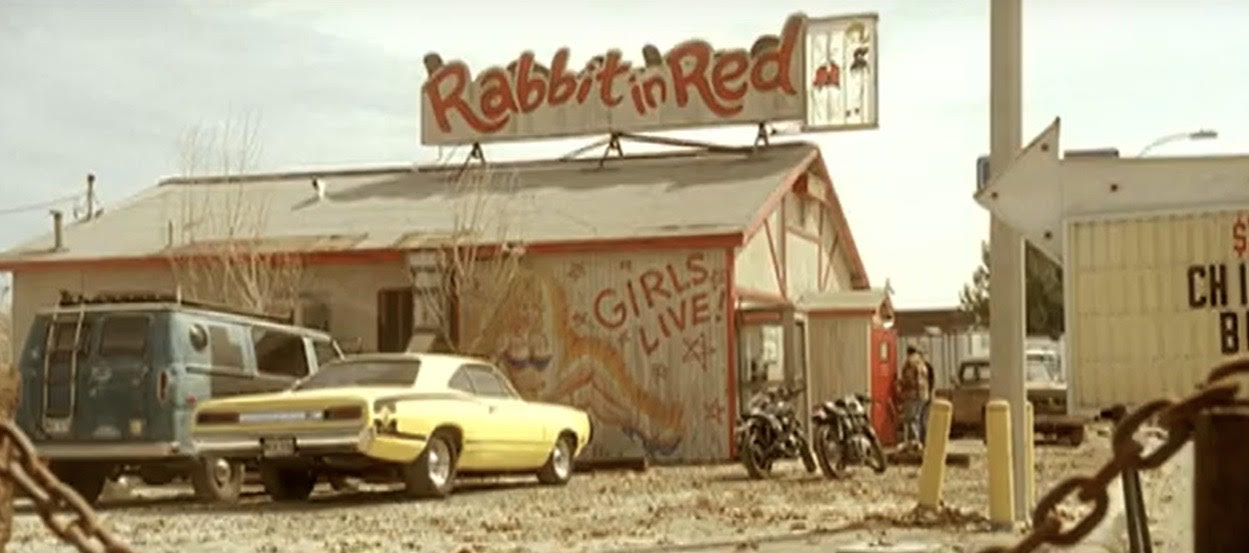
The Rabbit in Red – Rob Zombie’s Halloween
Rockstar turned writer and director Rob Zombie also took notice, and in penning his 2007 reimagining of the film he appropriated the Rabbit name, transforming it from a simple Midwestern lounge to a full-blown strip club in which young Michael Myer’s mother Deborah works. The Rabbit in Red would also go on to make an appearance in Zombie’s follow-up to his remake, 2009’s Halloween II. And as with most cinematic portrayals of strip clubs, it wouldn’t be complete without a colorful owner.
Enter prolific actor Dan Roebuck, who as The Rabbit in Red’s proprietor “Lou Martini” not only inhabited the role Zombie had written, but also imbued it with some of his own monster loving tendencies.
Sitting down recently with Roebuck in his Los Angeles home-cum-museum (the actor and filmmaker has over time amassed an entirely awe-inspiring collection of antiquities and artifacts, which combined work as a living history of the horror genre itself), we chatted of his involvement in Zombie’s divisive take on Halloween, as well as his early beginnings as an actor opposite Dennis Hopper in 1986’s infamous River’s Edge, and a whole lot more.

Dan Roebuck (Photo Copyright: Dan Roebuck)
“I first saw John Carpenter’s Halloween in 1979 at the Boyd Theatre in Bethlehem, Pennsylvania,” recalled Roebuck of his teenaged introduction to the film, “and I was obsessed. What Carpenter presented in that movie was something lacking in modern horror film, which was, he re-introduced suspense to the story, as opposed to the William Castle approach of it simply being, “Thrills and Chills!” So, it became a mixture of the two. And I remember being absolutely 100% interested in how that was different.”
Not content with simply being a passive viewer (Roebuck had already at an early age shown an interest in movie monsters and magic, as evidenced by his self-applied makeups using Imagineering products, in direct emulation of his film idol Lon Chaney), the actor decided to augment Michael Myers’ silver screen scares by terrifying captive theater-goers himself.
“I actually made myself up with a rubber white face, because I don’t think anyone knew then that Myers’ mask was actually a (modified) William Shatner mask,” said the now fifty-seven year-old, “and I came back later and ran through the theater while Halloween was playing, just like they used to hire people to do during screenings of The Tingler (in 1959). Bob Clausen, the theater’s manager, he knew I liked to do makeup, and as some friends and I had already started a Rocky Horror Picture Show revival there called the Lehigh Valley Rocky Horror Players, he’d asked me to do it. I guess it didn’t bother him that my fifteen year-old self was running around a screening of a R-rated horror film. But being killed on the screen by Michael Myers himself so many years later? I couldn’t have seen that coming.”
Roebuck’s pubescent interest in Halloween didn’t wane, and following Rick Rosenthal’s follow-up Halloween II in 1981, he like many was eager to see what next the series would bring, and for him the Myer’less third film, 1982’s Halloween III: Season of the Witch, didn’t disappoint.
“By Halloween III they had me,” remembers Roebuck, “because by then I was reading Fangoria magazine, and I was well aware that the masks in the film, the glow-in-the-dark skull, the lime-green witch and the jack-o’-lantern, were made by Don Post Studios, and I lusted after Don Post masks.”
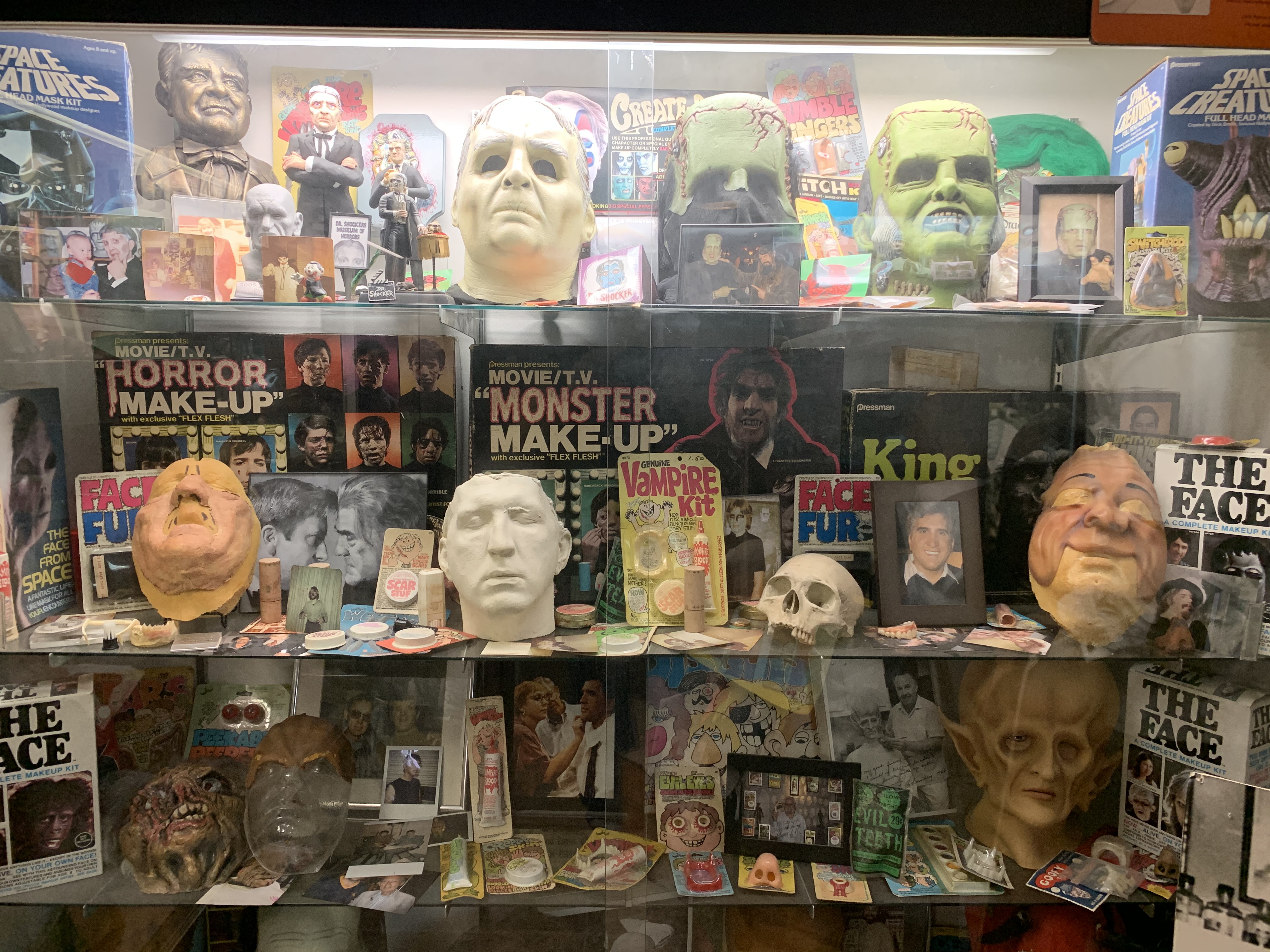
From Dan Roebuck’s Collection. (Photo Copyright: Dan Roebuck)
While his love of horror and sci-fi continued to grow, so did his passion for performing, and a move to Hollywood, California, would soon follow. Roles came quickly, and his second feature film (following his top-billed 1985 comedy Cavegirl), Tim Hunter’s previously mentioned River’s Edge, found Roebuck inhabiting the role of a teenaged murderer opposite the late Dennis Hopper.
Written by Neal Jimenez and co-starring a young Keanu Reeves, Ione Skye, Crispin Glover and Joshua Miller (who had made his own film debut in Halloween III), the suburban, post-punk flick is based on an actual 1981 crime, in which a sixteen-year-old Milpitas, California resident raped and murdered his fourteen-year-old girlfriend before boasting about the crime to his peers, who then took over two full days to report it.
In River’s Edge, Roebuck portrays a representation of that murderer, the unhinged and disassociated “Samson.”
“I went in as the character,” Roebuck recalled of the audition. “I greased my hair down and put on clothes that were very similar to the (eventual) costuming in the film, like a plaid shirt over some kind of t-shirt, and I walked into the room with a can of beer, cracked open the can and said, ‘Go ahead.’ As far as (director) Tim Hunter knew, I was just some dirty, crazy kid (casting director) Carrie Frazier had found. And the scene I was reading was the scene at the river with (Dennis Hopper’s character of) Feck. You know. ‘So, why’d you kill her? She tell you to eat shit?’ All of that stuff. It was crazy.”
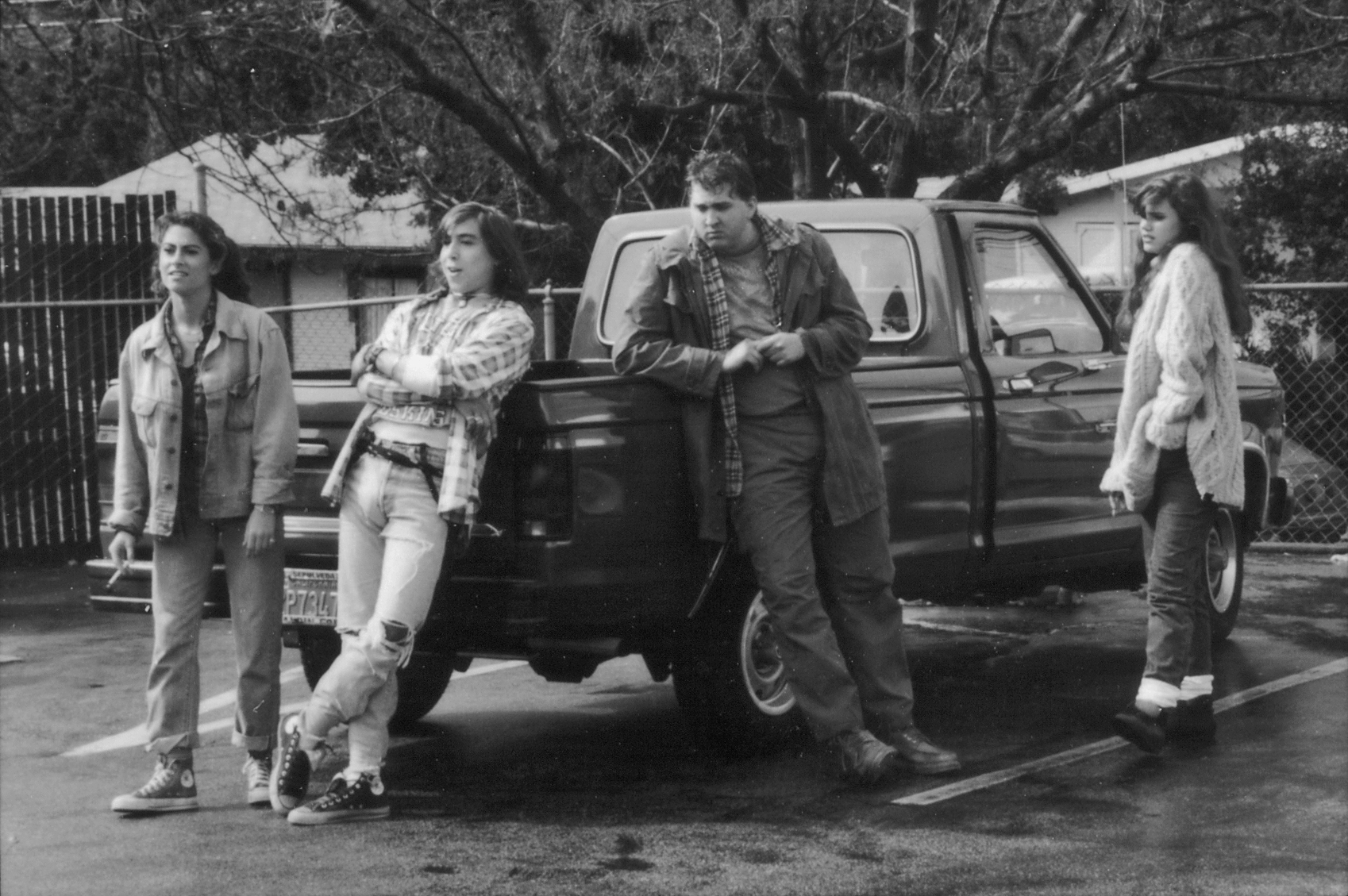
(left-to-right) Actors Roxanna Zal, Josh Richmond, Daniel Roebuck and Ione Skye between takes on River’s Edge (Photo Copyright: Daniel Roebuck)
Already a legend having appeared in such iconic American films as Rebel Without a Cause and Easy Rider, prolific actor Hopper (1936-2010) was however at the time working on a career revival following a recent stint in rehab. Of the trio of films which helped him attain it, one was David Lynch’s Academy Award nominated Blue Velvet, which he had wrapped just prior to principal photography of River’s Edge.
“I only remember the Blue Velvet thing because when we were shooting outside of Feck’s house,” remembered Roebuck. “River’s Edge cinematographer Fred Elms, who had also served as director of photography on Blue Velvet, gave Hopper a wax ear acupuncture model, and none of us knew why. But Dennis was very entertained by it, and I remember it so well.”
As for working with the seasoned actor (many of their scenes together found the two shooting nights on the banks of the American River outside Sacramento, California), “I probably wasn’t smart enough to be intimidated by him,” Roebuck said. “And that’s not a joke. I was such a fan of his. But it was so intimate, him and me. I mean, he’d work with the other kids, then they’d all leave, and I’d have night upon night upon night with just him, and only him. All to myself. And I was elated, actor to actor.”
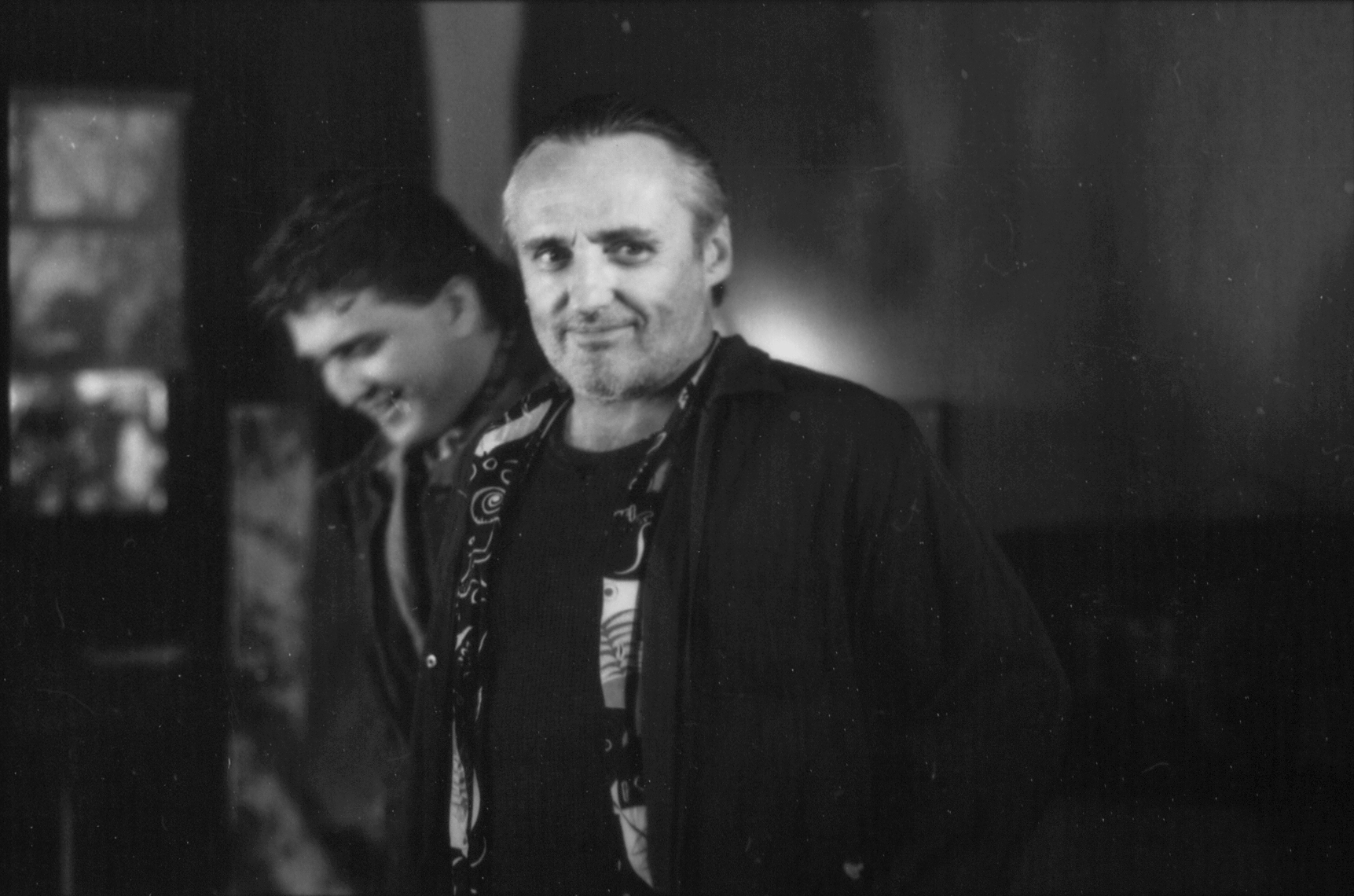
Daniel Roebuck and Dennis Hopper share a laugh on the set of Rivers Edge (Photo Copyright: Dan Roebuck)
Of those scenes which they share in River’s Edge, inarguably the most disturbing revolve around the two characters’ admissions to one another of the unrelated murders of two women, an act Hopper’s character of Feck tearfully regrets onscreen.
“I remember him saying to me off camera while he was crying, that he was thinking of (actress) Natalie Wood,” recalled Roebuck. “She had just died, and she’d been his friend who he’d acted with in Rebel Without a Cause. It was very weird too. Rarely does an actor share the emotional place they go to in order to ‘get there.’ It’s such a personal thing, and I started to weep while watching him cry.”
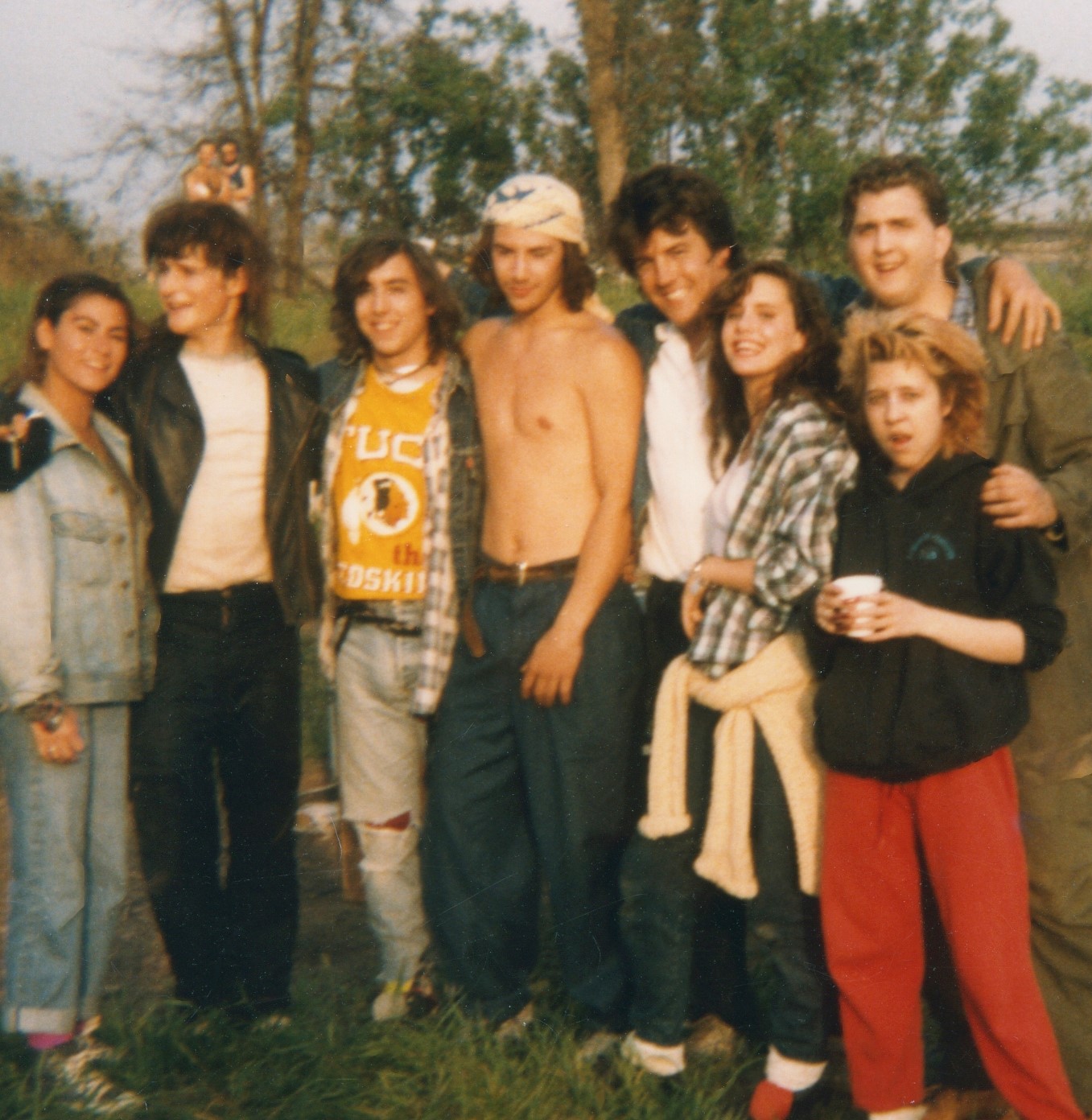
(left-to-right) Roxanna Zal, Crispin Glover, Josh Richmond, Keanu Reeves, Ione Skye, Phil Brock, Daniel Roebuck and Danyi Deats relax between set-ups on the Rivers Edge (Photo Copyright: Dan Roebuck)
Upon theatrical release in 1986 River’s Edge achieved critical acclaim and cult status, and as a result Roebuck’s career was in full swing. Over the next two decades he’d book well over one hundred film and television roles, including turns in 1987’s Dudes, 1993’s The Fugitive and 2000’s Final Destination, but it wouldn’t be until the late 2000s when his career came full circle. The Pennsylvania teen and monster enthusiast, who’d once frightened theater-goers in his self-applied faux Myers makeup, was about to be murdered on the silver screen by that very masked killer in Rob Zombie’s reimagining.
And that’s what we jump into in part two, which you can read here.